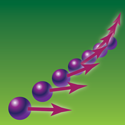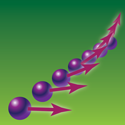Hidden symmetry unraveled
Writing in Physical Review Letters, Revaz Ramazashvili of Université Paris-Sud in Orsay urges us to examine an interesting effect in antiferromagnetic conductors in an applied magnetic field. Using group theory, he shows that the usual Zeeman splitting for electron spins vanishes when the magnetic field is oriented exactly perpendicular to the preferred magnetization axis of the antiferromagnet. The hidden-symmetry protection against the Zeeman splitting leads to a novel momentum dependence of the transverse electron g-factor, which Ramazashvili denotes the “Zeeman spin-orbit coupling.” Notably, this is a low-dimensional effect and in a three-dimensional material it would only be active on a two-dimensional surface.
The generality of the advanced arguments implies that, in principle, the effect could be found in a number of highly relevant antiferromagnetic materials such as cuprates, borocarbides, iron pnictides, and heavy-fermion compounds. Interestingly, the new effective spin-orbit coupling suggests that the spins associated with charge carriers could be manipulated with an AC electric field without destroying spin coherence. This capability is at the heart of such intensely pursued spintronics applications as the spin transistor. Ramazashvili’s proposal has to be carefully explored further, though, since other spin-orbit coupling tools have had only limited success. – Yonko Millev





